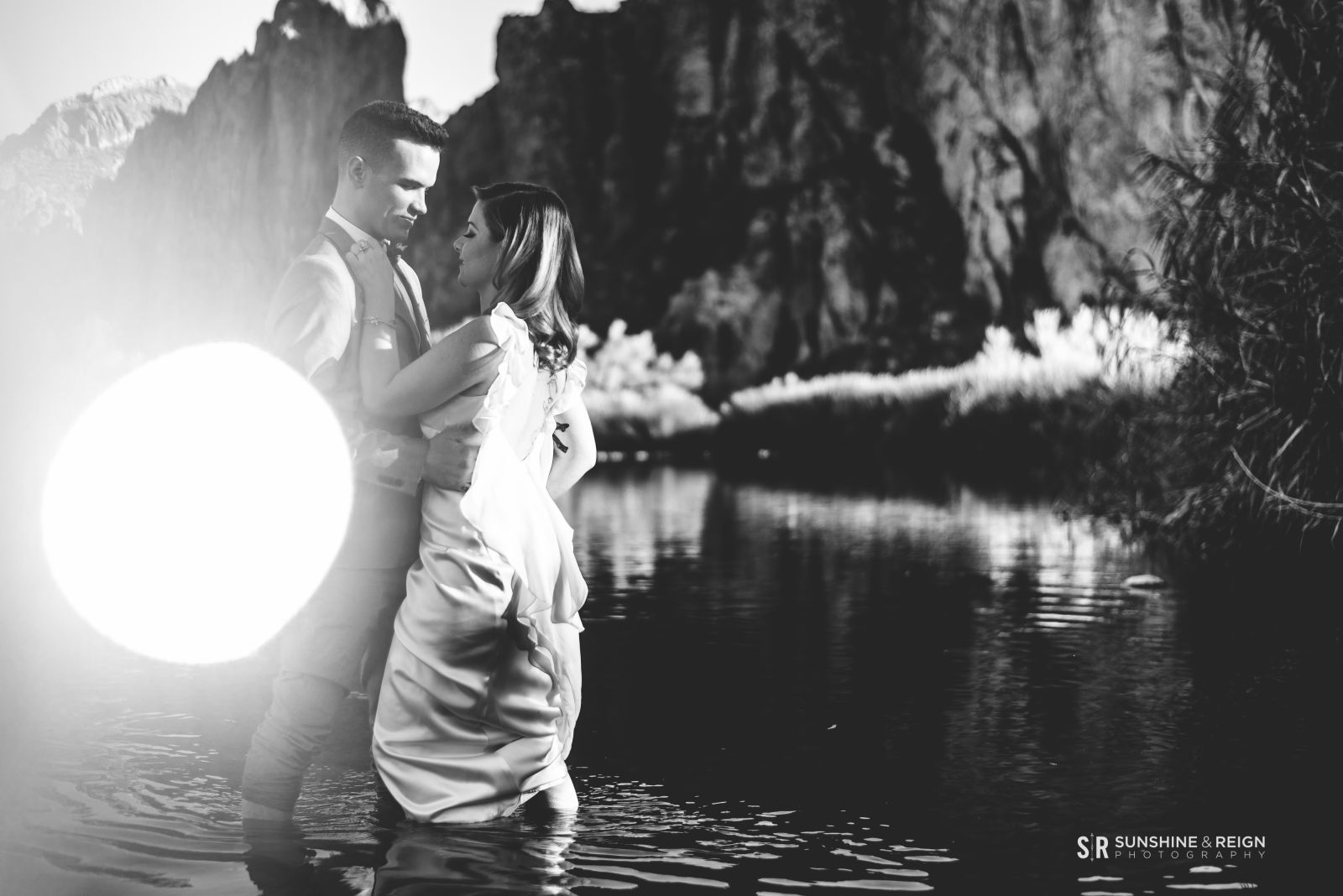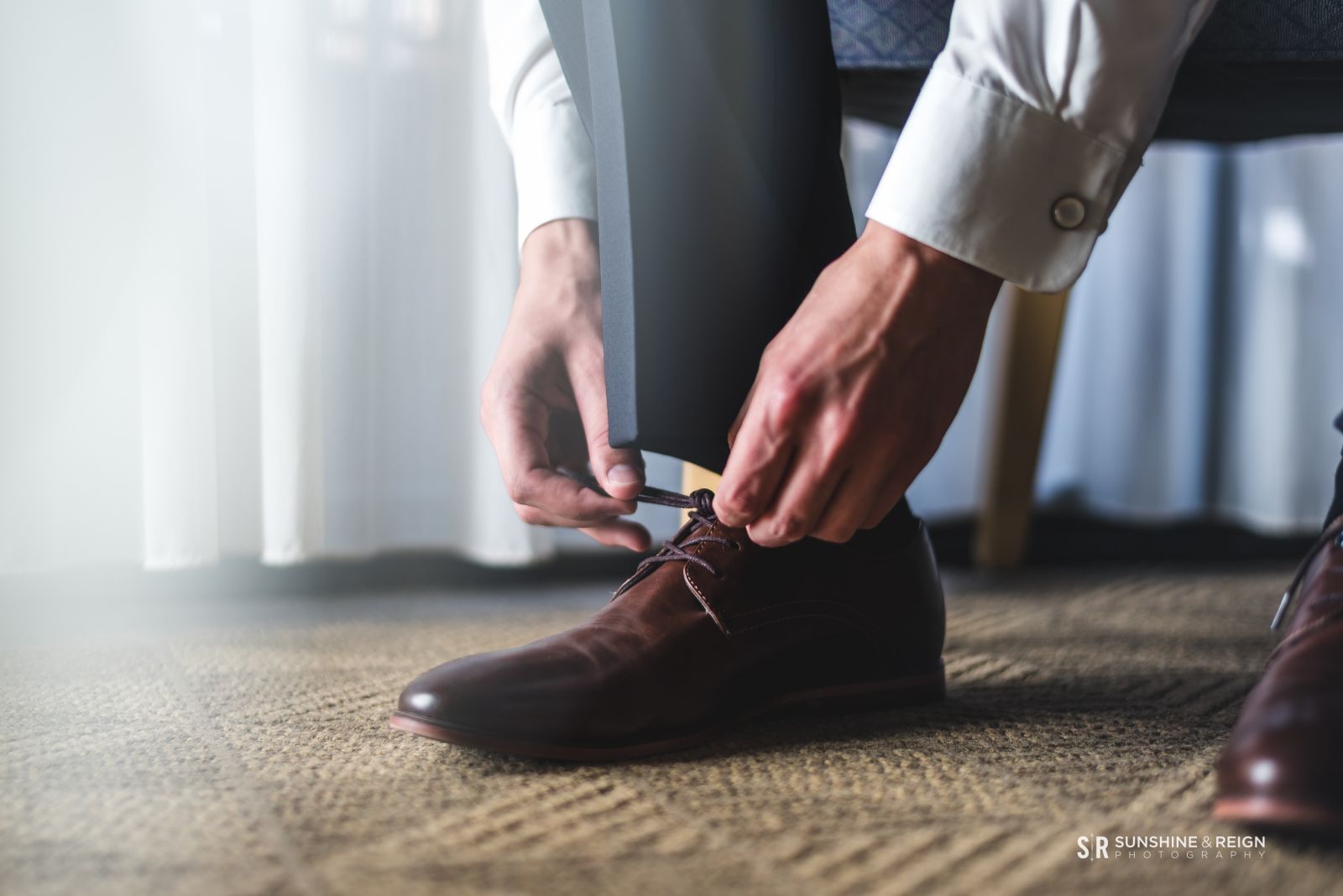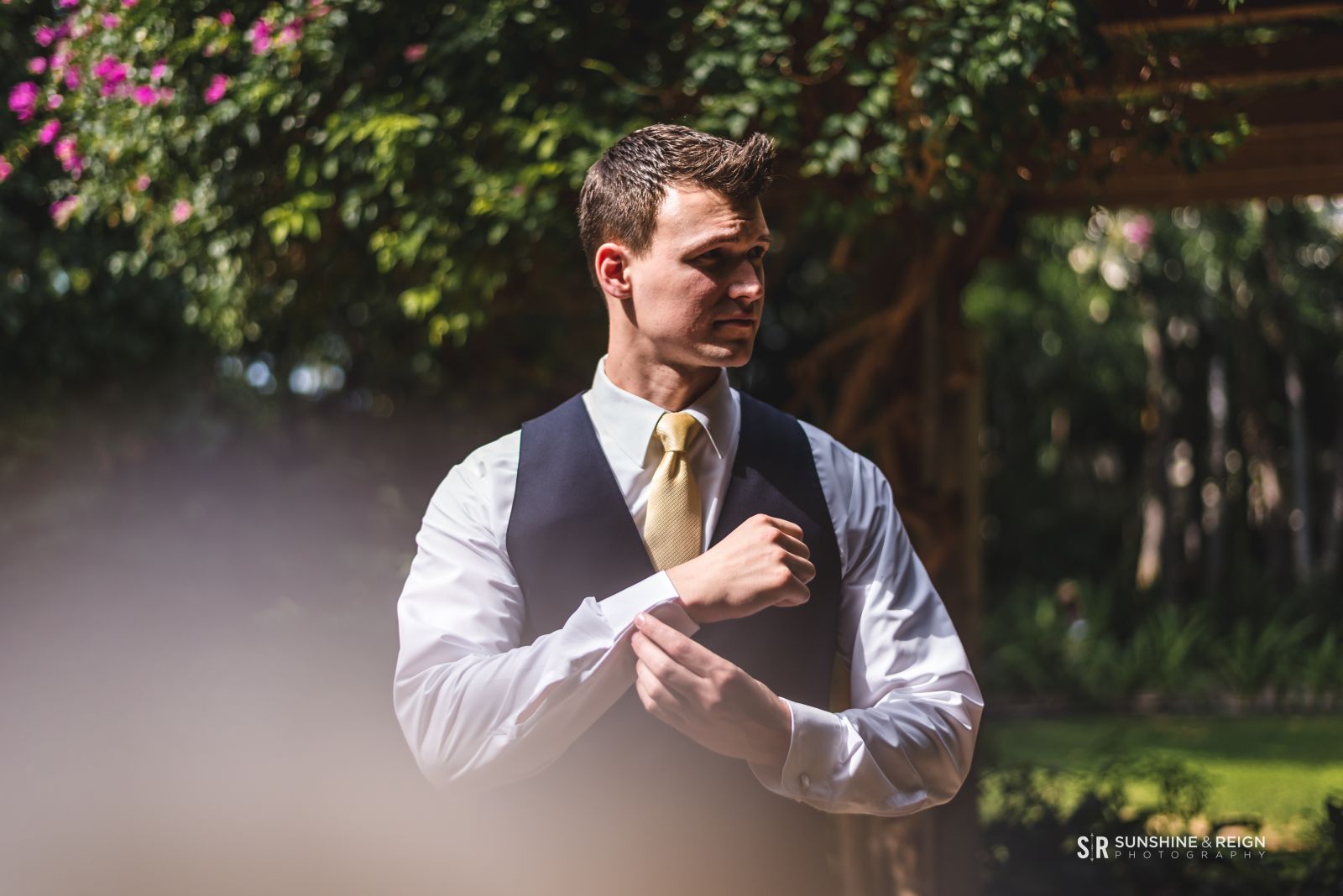
Our “camera bag” is full of all kinds of fun odds and ends: prisms, mirrors, copper pipes, and even a crystal ball. One of our favorite “tools” is our trusty double convex lens. It has a myriad of uses, but we use it most for close up shots and creating flares. You can get them on Amazon, but they tend to be sold out often. A simple Google search for “double convex lens 75mm 17.5cm focal length” will net you several hits.
[Rewind: 3 IDEAS TO INSPIRE CREATIVE GETTING READY SHOTS]
If you’ve read some of our other articles, you’ll know that we love getting ready shots (especially all the details that we like to capture: rings, shoes, jewelry, etc.). And this is partially why we initially fell in love with our convex lens; it’s a great macro substitute.
Use a Convex Lens as a Macro Substitute
When we use our convex lens as a macro substitute, we mean we’re literally not using a macro lens for close-up detail shots. We hold the convex lens in front of our camera’s lens to magnify the image (or part of the image). Here’s a tip: when using a convex lens, always shoot in live view. Here’s how we do it…
When magnifying the entire frame for ring shots, in particular, we like to use our 50mm lens (sans hood) with an old 2X Tamron teleconverter that we acquired (ours is actually from the ’90s); it allows us to double our focal length. We open the aperture as far as the lens will allow (f/1.8, for example) and focus as close up to the ring as possible. Next, we hold the convex lens directly against the rim of our lens. And, finally, we physically move our camera away from and toward our subject (still holding the convex lens against our 50mm lens) until the ring is in focus. It’s a bit tricky to nail at first, and it takes some practice. But once you master it, you can create some gorgeous ring shots.
 50mm, ISO 100, f/4.5, 1/200 sec
50mm, ISO 100, f/4.5, 1/200 sec
 50mm, ISO 50, f/5.0, 1/160 sec
50mm, ISO 50, f/5.0, 1/160 sec
 50mm, ISO 100, f/4.5, 1/250 sec
50mm, ISO 100, f/4.5, 1/250 sec
If you’re magnifying the entire frame for a macro look, but don’t need your subject to be quite as close up, you can ditch the teleconverter and simply hold the convex lens directly against the rim of your lens. We’ve found that this technique works really well with a 50mm lens (and other lenses in the same general focal length).

50mm, ISO 80, f/3.5, 1/200 sec
Something else to try is magnifying only part of the frame. Follow the same procedure that we described above for focusing on your subject. This time, hold the convex lens a few inches from your camera’s lens, moving both the camera and convex lens toward and away from your subject until you have the desired subject in focus. You’ll be able to create some pretty solid images.
 50mm, ISO 100, f/5.0, 1/200 sec
50mm, ISO 100, f/5.0, 1/200 sec
 50mm, ISO 64, f/1.8, 1/4000 sec
50mm, ISO 64, f/1.8, 1/4000 sec

50mm, ISO 100, f/1.8, 1/160 sec
Use The Convex Lens to Create Flares & Haze
We also love our convex lens because it flares with the best of ’em. And if you practice enough, you can essentially make it do whatever you want. You can create bokeh-like flares as well as some sweet hazy “blurs.” The effects you’ll be able to achieve will depend on the light you have to work with as well as the colors in your surroundings, but you’ll definitely be able to spice up an otherwise ordinary scene and make your images look even more amazing!
To create a flare or some haze, try holding the convex lens on different sides of your camera’s lens at varying angles to catch the light in a way that looks cool to you within the frame—you’ll be able to check because you’ll be in live view and will clearly be able to see the effects you are creating in camera.
 50mm, ISO 200, f/1.8, 1/60 sec
50mm, ISO 200, f/1.8, 1/60 sec
 50 mm, ISO 320, f/2.5, 1/2500 sec
50 mm, ISO 320, f/2.5, 1/2500 sec
 50mm, ISO 100, f/3.2, 1/100
50mm, ISO 100, f/3.2, 1/100
 50mm, ISO 100, f/1.8, 1/2000 sec
50mm, ISO 100, f/1.8, 1/2000 sec 50mm, ISO 50, f/3.5, 1/200 sec
50mm, ISO 50, f/3.5, 1/200 sec
 50mm, ISO 50, f/1.8, 1/200 sec
50mm, ISO 50, f/1.8, 1/200 sec
 50mm, ISO 80, f/1.8, 1/2500 sec
50mm, ISO 80, f/1.8, 1/2500 sec

50mm, ISO 100, f/1.8, 1/125 sec
Conclusion
We’re not necessarily advocating that you ditch your macro lens (full disclosure: we don’t use one and don’t really plan on ever getting one), but we think it’d be worth it for you to spend $10-$20 and add a few convex lenses to your arsenal. Let us know if you’ve tried it or have thought about it/are going to give it a go (comment below). And we’d love to see your images (post some over at our ever growing Facebook community group)!





Get Connected!